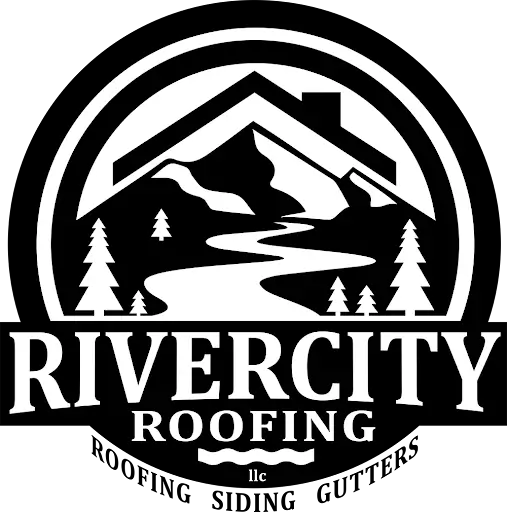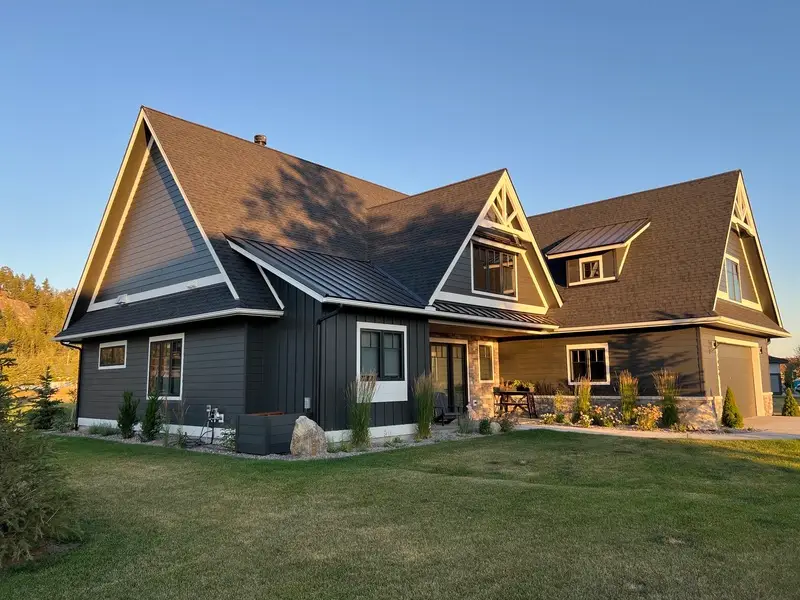As a homeowner, it’s important to know how long a new roof will last because it’s a big investment that affects the safety, looks, and value of your home. How long new roofs last is determined by the quality of materials, the roofing contractors who installed them, and the maintenance that follows. Since it’s so important, you need to have realistic expectations of your roof’s lifespan so you can plan your finances and ensure your home’s structure for years to come.
This article will get into the specifics of what affects a roof’s lifespan, covering the different materials used in roofing and their average lifespan, from traditional asphalt shingles to modern synthetic solutions. It will look into key factors such as climate, installation quality by professional roofing services, and regular roof inspections and maintenance. It will also discuss strategies to extend roof life, including a roof maintenance checklist and the role of warranties in protecting your investment. By knowing how long a roof lasts and how often a roof should be replaced, including whether to replace the entire roof at once for consistent appearance and stability, homeowners can make informed decisions on roof replacement and maintenance so their home remains safe and secure for years to come.
Material Lifespan of Roofs
Lifespan of Different Roofing Materials, Including Asphalt Shingles
Roof lifespan is largely dependent on the materials used. According to the International Association of Certified Home Inspectors, the lifespan of common roofing materials varies greatly. For example, three-tab asphalt shingles last 20-30 years, architectural asphalt shingles last up to 50 years, metal roofs, which are becoming popular due to their durability and looks, can last 40-80 years, and some high-end materials can last even longer.
Clay and concrete tiles have the longest lifespan, often exceeding 100 years, so they’re a popular choice in areas with extreme weather. Slate roofs top the durability chart with the potential to last over 150 years and are loved not just for their longevity but also their classic looks.
Durability vs Cost
When choosing roofing materials, homeowners must balance durability with cost. Asphalt shingles are the most common in the US, are affordable, and have a decent lifespan, being $1 to $5 per square foot. On the other end, slate roofing, while having an unmatched lifespan of 150 years, can be very costly, $15 to $30 per square foot.
Metal roofing is the middle ground and costs $5 to $12 per square foot, depending on the metal and finish. While it’s more expensive up front, metal roofs provide good value over time because of
its long lifespan and low maintenance. Clay and concrete tiles are expensive at $10 to $25 per square foot but require little upkeep and perform well in hot climates.
Best Value for Longevity
For homeowners who want long-term cost-effectiveness, slate, clay, and high-end metal roofs are the best value. These materials may be more expensive upfront but minimize roof replacement frequency due to their long lifespan. It is also important to attach a protective underlayment as a flat
and straight as possible to the roof deck for moisture protection. For example, a standing-seam metal roof may be more expensive upfront but can last over 75 years with proper installation and maintenance, a cost-effective solution in the long run.
Regular roof maintenance can extend the life of any roofing material. Getting professional roofing services for regular inspections and following a roof maintenance checklist can prevent premature wear and tear. Homeowners should also consider how often a roof should be replaced and how long a roof inspection should take to ensure optimal performance and longevity of their roofing system.
Free Roof Inspections. Fast. Reliable.
Is your roof ready to weather the storm? Dont risk property damage. Our free roof inspections provide expert analysis to identify potential issues before they become costly problems.
Key Factors
Material Quality and Type
Roof lifespan is greatly affected by the quality and type of material used. High-quality materials such as premium metal, designer asphalt shingles, or durable synthetic composites have better resistance to environmental factors and wear and can last longer than traditional materials. For example, metal roofing can last 40-80 years, depending on climate, and high-grade asphalt shingles can last up to 50 years with proper maintenance.
Roof Color
Choosing the right roof color is important for both looks and functionality. Light-colored roofs like white and light grey reflect UV rays and reduce cooling costs, which is perfect for hot climates. Darker roofs absorb heat, which can be beneficial in cold climates by reducing heating requirements. Roof color can also affect the overall energy efficiency of a home and how often the air conditioning system needs to run.
Installation Practices
Roofing contractor expertise and installation practices can greatly impact the lifespan of a roof. The installation process is crucial, including proper roofing material cleanup and debris removal at the end of the process. Proper installation ensures that roofing materials perform optimally and provide good waterproofing, ventilation, and insulation. Poor installation can lead to premature deterioration, leaks, and other costly problems. It’s important to choose a reputable roofing contractor who follows industry best practices and manufacturer guidelines.
Roof Slope and Drainage
Roof slope is crucial for water runoff and drainage. The installation of drip edges is essential in preventing water damage and giving roof edges a finished look. Roofs with higher pitch have less water pooling and debris accumulation and can last longer. Flat roofs require meticulous installation of drainage systems to prevent water accumulation, which can lead to mold growth, structural damage, and material degradation.
Ventilation and Insulation
Proper ventilation and insulation are key to maintaining the structural integrity and efficiency of a roof. Good attic ventilation prevents heat and moisture buildup, which can damage roofing materials and reduce their lifespan. Insulation helps to maintain indoor temperature and reduce thermal stress on roofing materials caused by extreme outdoor temperatures.
Weather and Climate Conditions
Local climate and weather conditions are critical factors in determining the durability of roofing materials. Protecting roof decking from water damage using underlayment is essential to ensure the longevity of the roof. Roofs in areas with severe weather conditions such as heavy rain, hail, or extreme temperatures require materials that can withstand these challenges. For example,
metal roofs are good for areas prone to wildfires because of their fire resistance; slate roofing is good for areas with heavy snowfall because of its durability and water resistance.
Getting regular roof inspections and maintenance as outlined in a roof maintenance checklist can extend the life of roofing materials. Homeowners should consider how often a roof should be replaced and how long a roof inspection should take to ensure optimal performance and longevity. Getting professional roofing services for regular maintenance is important to extend roof life and maximize roof investment.
Tips to Extend Roof Life
Maintenance
Regular maintenance is key to long-term roof durability. Addressing roof repairs, such as leaks and structural concerns, promptly is crucial. By regularly inspecting and maintaining your roof, homeowners can prevent future costly repairs. Regular inspection helps to identify potential problems early on so repairs can be done promptly and efficiently. Proper routine maintenance of your roof is important to extend its life. Regular roof inspection helps to identify minor problems before they become major problems and saves homeowners from replacing their roofs prematurely.
Cleaning Practices
Over time, roofs can accumulate dirt, debris, algae, moss, and other unwanted contaminants, which can cause damage if not addressed. It is important to use roofing nails to secure roofing materials during cleaning to prevent any displacement. Roof cleaning is part of home maintenance that can extend your roof’s life, improve its looks, and prevent structural problems. Regular roof cleaning can extend the life of your roof as contaminants like moss and algae can cause shingle deterioration and weaken the structure. Homeowners should practice regular cleaning, including using eco-friendly solutions and low-pressure washing, to avoid damaging the roofing materials.
Seasonal Checks and Repairs
Seasonal maintenance is important to extend your roof’s life. Checking and maintaining ridge cap shingles during seasonal maintenance is crucial to prevent leaks and other issues. In spring, clear gutters and repair any winter damage to ensure good water flow. In the fall, trim nearby trees and clear your roof of debris to prevent damage. Moreover, in winter, regular inspections are done to remove excess snow carefully to prevent structural damage. Each season has its own maintenance task that, when done regularly, can extend your roof’s life.
Storm and Sun Damage
To prevent storm damage, regularly check for loose or damaged shingles and ensure gutters and downspouts are functioning well to prevent water damage. Sun exposure can also cause wear and tear on roofing materials. Regular inspection should be done to check for sun-related damage such as chipping, fading, and warping. Homeowners should consider roofing materials that are UV and thermal shock-resistant.
Professional Inspections by a Roofing Contractor
Hiring professional roofing services for maintenance has many benefits. Their expertise can identify potential problems before they become major and ensure the quality of installation and materials. A professional roof inspection is important to extend your roof’s life as they can find hidden or subtle problems that homeowners can’t see. Regular professional inspection is recommended in your Roof Maintenance Checklist to keep your roofing system in good condition and comply with warranty requirements.
Following these tips in your regular home maintenance will keep your roof in good condition and extend the life and value of your home. Homeowners should also know how often to replace a roof and How Long a Roof Inspection Takes to plan and budget for future roofing needs.
Warranties and Roof Longevity
Warranty Types
When you buy a new roof, homeowners are offered two types of warranties: manufacturer’s warranty and workmanship warranty. Manufacturer’s warranty covers defects in roofing
materials, usually 10 to 50 years. This warranty means if materials fail prematurely due to manufacturing defects, the cost of materials and sometimes labor will be covered.
On the other hand, a workmanship warranty is provided by the roofing contractor and covers installation mistakes, including those made during roof installation. This type of warranty can vary greatly; some contractors offer a few years, while others may offer a lifetime warranty depending on their confidence in their workmanship.
Coverage
Homeowners should understand the details of what each warranty covers. A manufacturer’s warranty usually covers the cost of materials that are found to be defective, including shingles and other roofing components. However, these are often limited to material costs only, not labor costs for tear-off and disposal of failed materials. The workmanship warranty provided by contractors covers installation mistakes.
These warranties may also include labor costs to fix these mistakes, so more comprehensive coverage. Homeowners should know that an extended warranty is available, which combines manufacturer and workmanship warranty for more robust protection.
Benefits and Limitations of Roof Replacement
The main benefit of a roofing warranty is the peace of mind. Knowing that both material defects and installation mistakes are covered will protect homeowners from unexpected expenses, which can be huge. A robust warranty can protect your roofing project investment. Having a robust warranty can also add value to your home, making it attractive to potential buyers. However, warranties have limitations. They don’t cover damage due to severe weather, normal wear and tear, or maintenance neglect. Homeowners should do regular roof inspections and follow a comprehensive Roof Maintenance Checklist to keep their warranty valid and the roof in good condition.
Knowing the ins and outs of roofing warranties, how long they will last, what they cover, and their limitations is crucial for homeowners to get the most out of their roofing investment and protect it well. Hiring reliable roofing services and knowing how often to replace a roof and how long a roof inspection takes can also help in maintaining the roof’s longevity and performance.
Conclusion
We have discussed many factors that affect roof longevity, from materials to installation by professional roofing services to maintenance. Having a comprehensive Roof Maintenance Checklist, knowing how often a roof can be replaced, and knowing how long a roof inspection takes is key to extending your roof’s life. These tips will not only protect your home’s structure but also your wallet by reducing the frequency of replacement and repair.
These results show that choosing high-quality materials and hiring reliable roofing services for installation and maintenance is a must. Spending time for regular inspection and maintenance can prevent problems from arising so your roof can withstand the environmental elements. So homeowners should prioritize these practices so their homes are protected and their roofing investment will give the longest return. This roof care approach will not only keep your home safe and look good but also add to its value.



